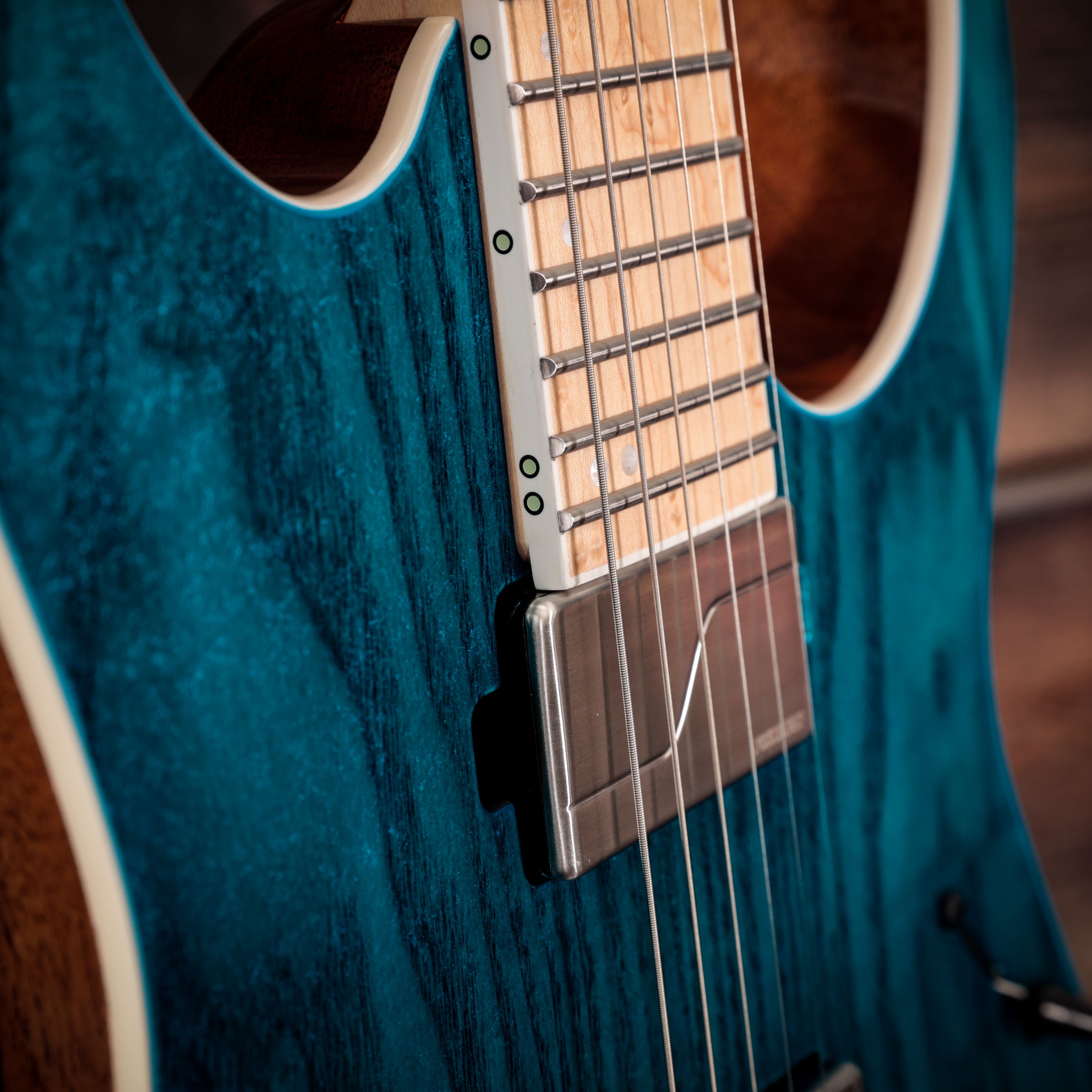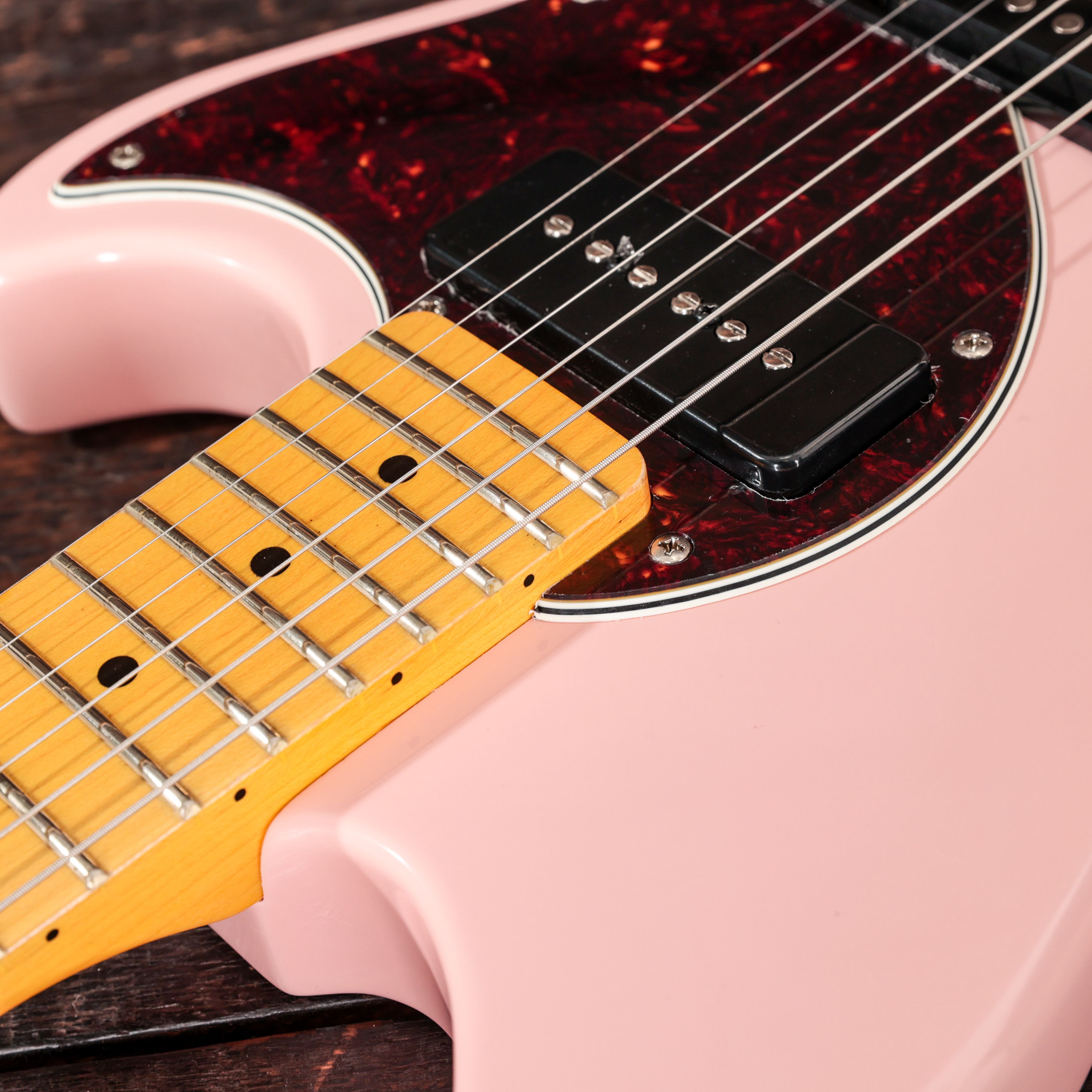- Should you get a guitar with 22 or 24 frets?
- Do 22 fret guitars sound different to 24 fret guitars?
- What About 21 Fret Guitars?
- FAQs:
- Want To Learn More?
Guitarists can be picky when it comes to the ideal specs on their instrument, but the debate of what fretboard length to choose is justified. Whether your guitar has 21, 22, 24 frets or even more, will change how comfortable you’ll find it to play, what you can play and even how it will sound. Here’s a brief overview of how just 22 and 24 fret guitars differ:
- Guitars with 22 frets have a shorter fretboard than those with 24 frets
- This means the neck pickup is fitted further away from the guitar bridge
- As a result, 22 fret guitars typically produce a ‘fatter’, more rounded tone
- In contrast, the neck pickup on 24 frets guitars will generally sound crisper and more defined, losing some warmth
- You gain full access to four complete octaves on a 24 fret guitar, giving you more space for soloing up at the higher frets
- Vintage-inspired electric guitars are also made with 21 frets, while some modern guitars might have 27
Electric Guitars
Should you get a guitar with 22 or 24 frets?
The fretboard length you choose can make more difference than you might expect to the feel and sound of your guitar. Let’s take a look at the key points that separate the two so that you can make the best choice for your style…
Fretboard range – do those two frets make a difference?
The most obvious difference between 22 and 24 fret guitars is the two extra frets, giving you access to four full octaves. Guitarists won’t often use the 23rd or 24th frets, although they’re sometimes utilised in rock and metal, especially in technical or progressive styles.
Bands like Megadeth, Avenged Sevenfold, and Children of Bodom all reach into the higher frets in their solos. Some players like Wes Hauch, Rusty Cooley and Jake Bowen take things even further, notching up 27 frets on their custom shop guitars.
The real reason many players will choose a 24-fret guitar is the breathing room it gives you when fretting that high. The 22nd fret can feel cramped, especially on set-neck or single-cut guitars, whereas 24 frets give you more breathing room. There’s also fretboard familiarity: once you’re used to a certain number of frets, moving to any other setup can feel frustratingly unfamiliar.
Do 22 fret guitars sound different to 24 fret guitars?
Yes – If you were to compare two identically spec’d guitars, one with 22 frets and the other with 24, the neck pickups will sound different.
The fretboard of a 22 fret guitar is shorter without the two additional frets, meaning the neck pickup can be placed further away from the bridge of the guitar. This produces a warmer, more bass-rich tone, ideal for blues, jazz, or vintage rock tones.
On the other hand, a 24 fret guitar has less room to accommodate the neck pickup on the body without extending scale length, forcing it in closer to the bridge pickup.
In essence, the 22 fret guitar gives you greater tonal range and contrast between the two pickups: the warmer, livelier sound of the neck pickup and the crisper, cutting edge of the bridge pickup.
The difference between the two on a 24-fret guitar isn’t as great, meaning there is slightly less tonal range and ‘colour’ to use. This is the main reason that some guitarists will argue for the superiority of 22-fret instruments, especially when it comes to tone.
Few brands offer the same model in both 22 and 24 fret versions, but PRS Guitars is a rare example. Comparing the PRS Custom 22 to the Custom 24 showcases the tonal differences caused purely by fret count and pickup placement.





Responses & Questions